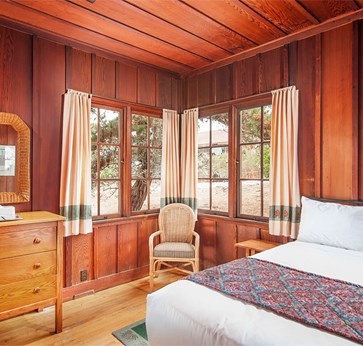A Living Architectural History
Noted architect, Julia Morgan was part of the Arts & Crafts movement that influenced architects, designers, and craftspeople in the late 19th century. As the nation's industrialization was creating an expanding gap between designer and finished product - architects were looking to regain individuality in artistic creation.
The Arts & Crafts movement was born to help reform design and bring back quality craftsmanship – while establishing harmony between architect, designer, and craftsperson. New buildings were now being constructed of local materials and designed to blend in with the landscape. Structures and their furnishings were simple and elegant, and often left unpainted to reveal the natural beauty of the wood. The goal was not only an aesthetic one but also a healthy one: bring people back in touch with nature and restore balance and harmony.
Julia Morgan’s work at Asilomar exemplified the true style of the Arts & Crafts architecture movement. Her buildings were designed from the inside out, with the main character and expression found in the interiors. Open spaces and natural light dominated, with the craftsmanship of the structures becoming the art of the building. The use of local wood and stone was fundamental. Weaving patterns together out of lines, colors and textures, the result was a lovely rhythm and harmony. A fireplace was often the centerpiece of a room, as Morgan felt that it represented the soul of the structure.
Today, many of her original buildings – now designated as Historical Landmarks – still stand as a beautiful reminder of the clean lines and fine craftsmanship of that era.
Self-Guided Walking Tour Guide
Guests can use the below guide and explore the architecture and history of Asilomar.






